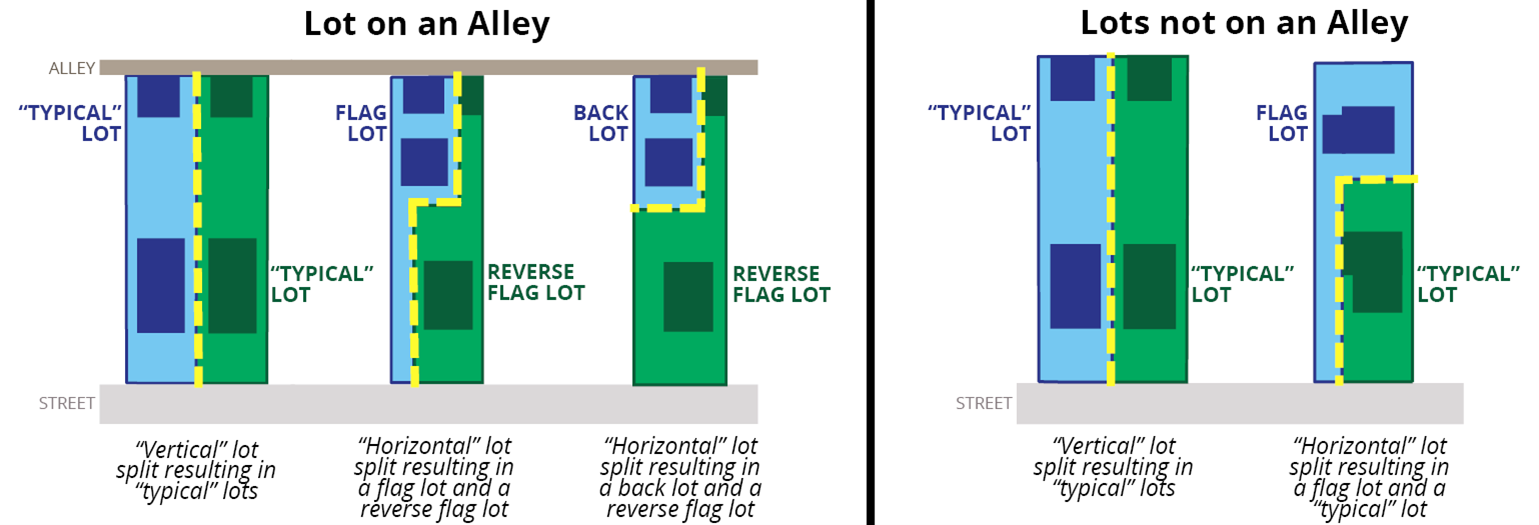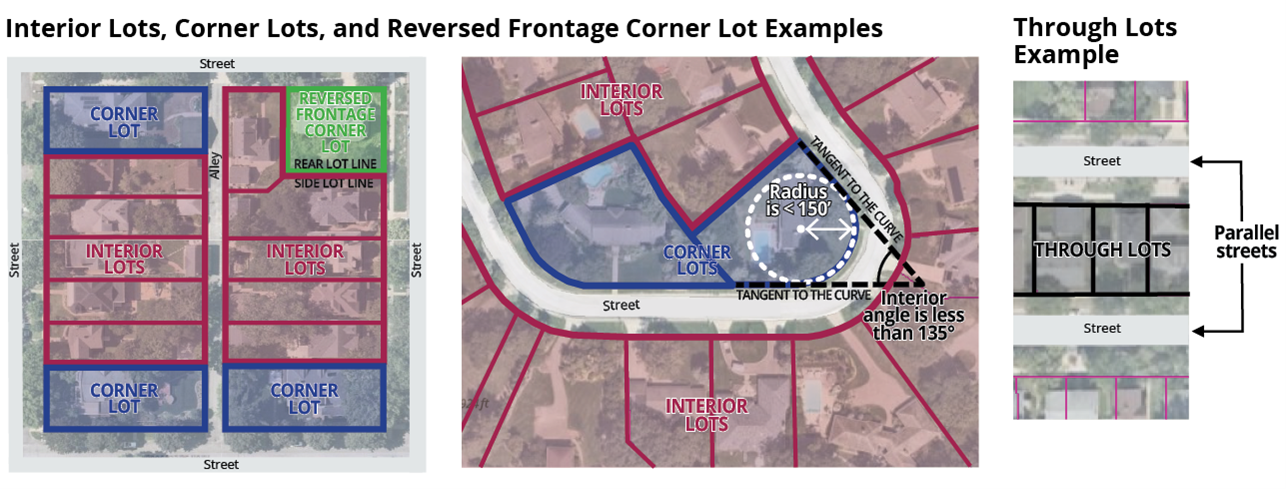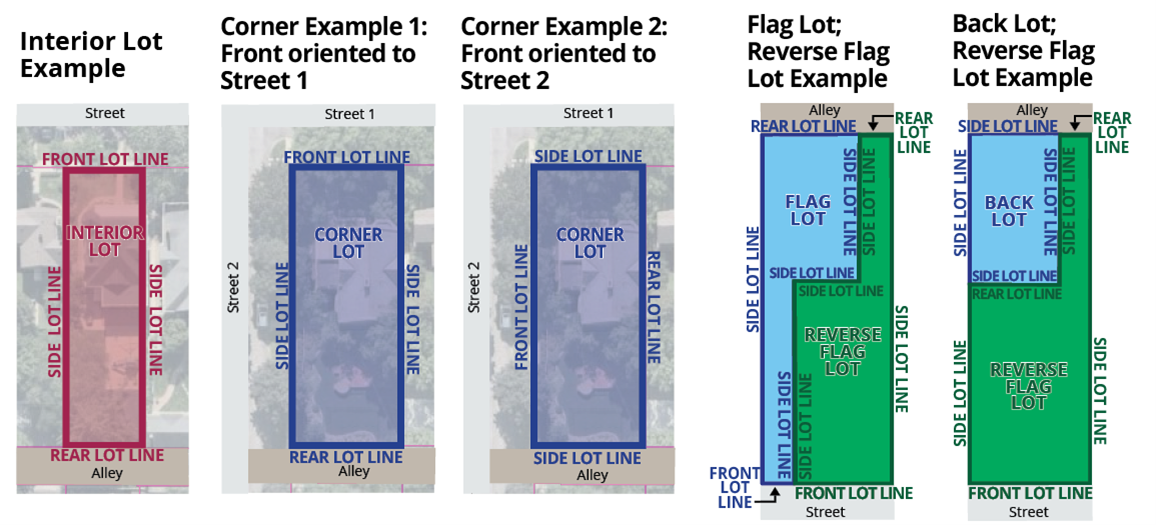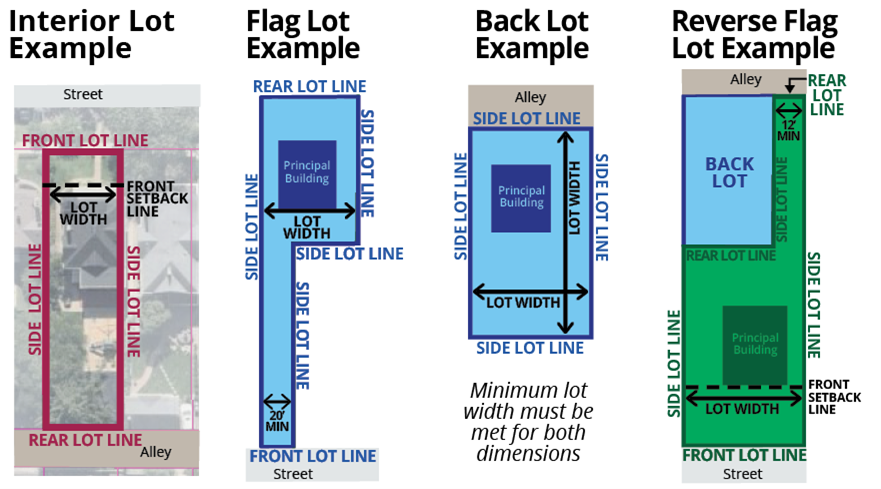Overview
If a lot is large enough, there may be options to subdivide the lot and develop on one or more of the lots according to standards of the zoning district that the lot is located in.
The division of one or more lots which creates no more than four lots is permitted by a Lot Split; five or more lots requires a new plat of the property (see Platting of Property).
General requirements for new lots are found in Sec. 69.508 of the Zoning Code and are summarized below.



